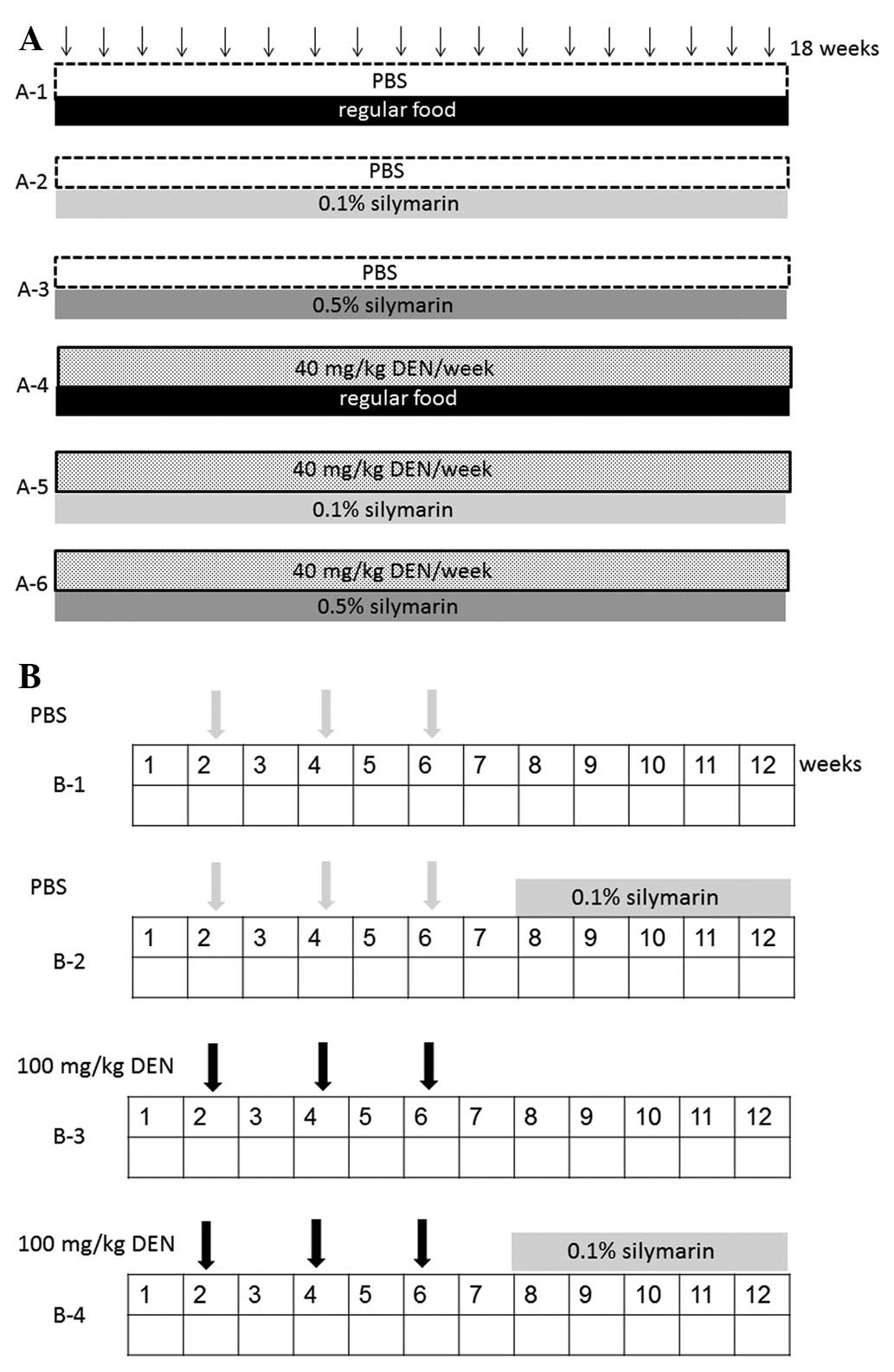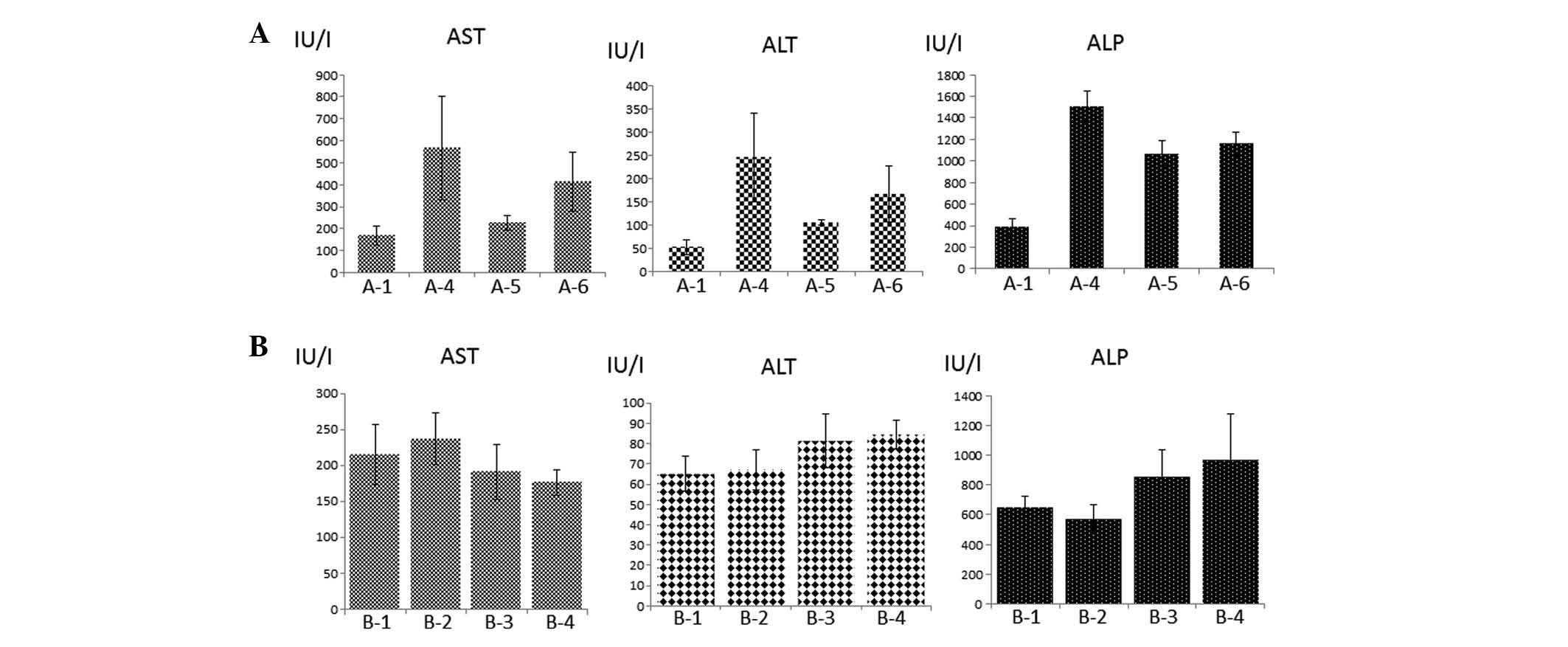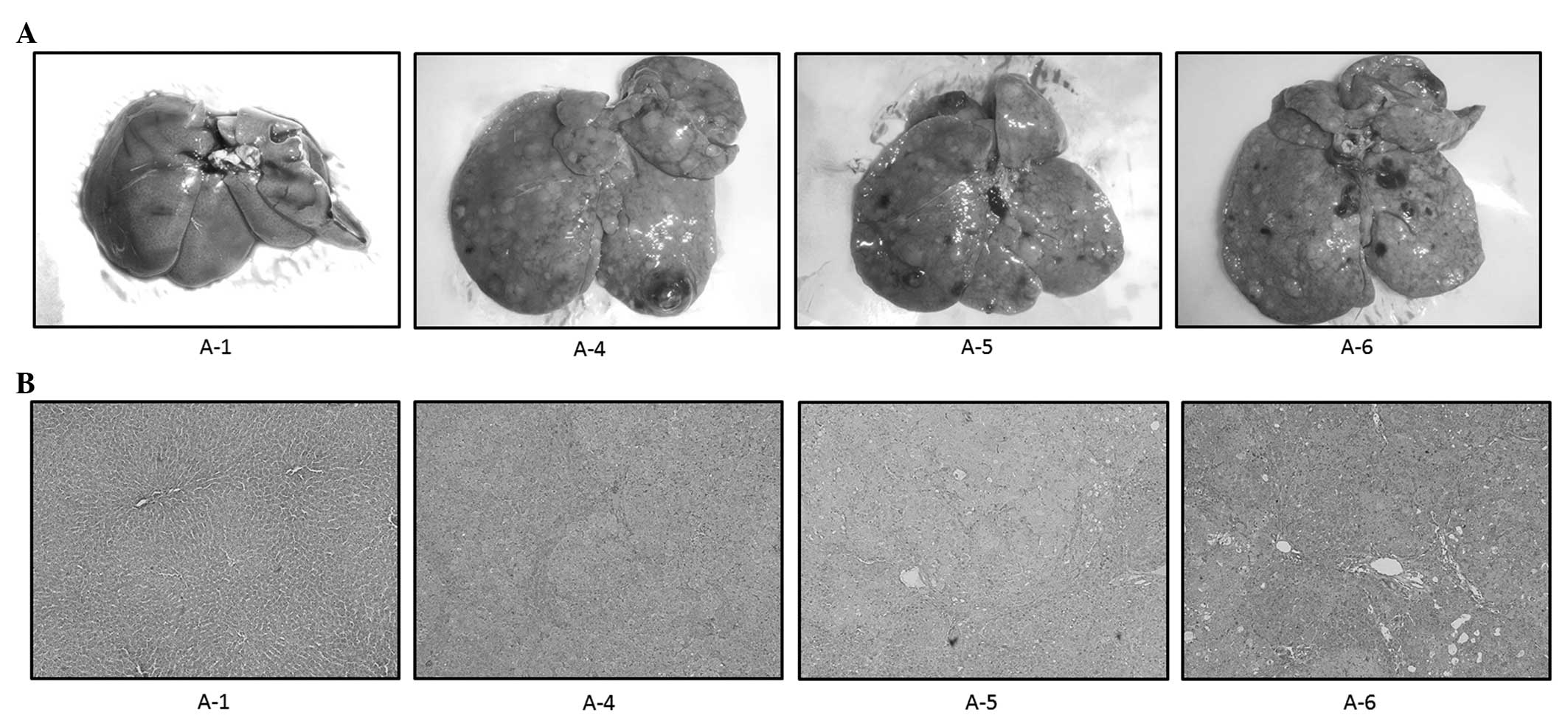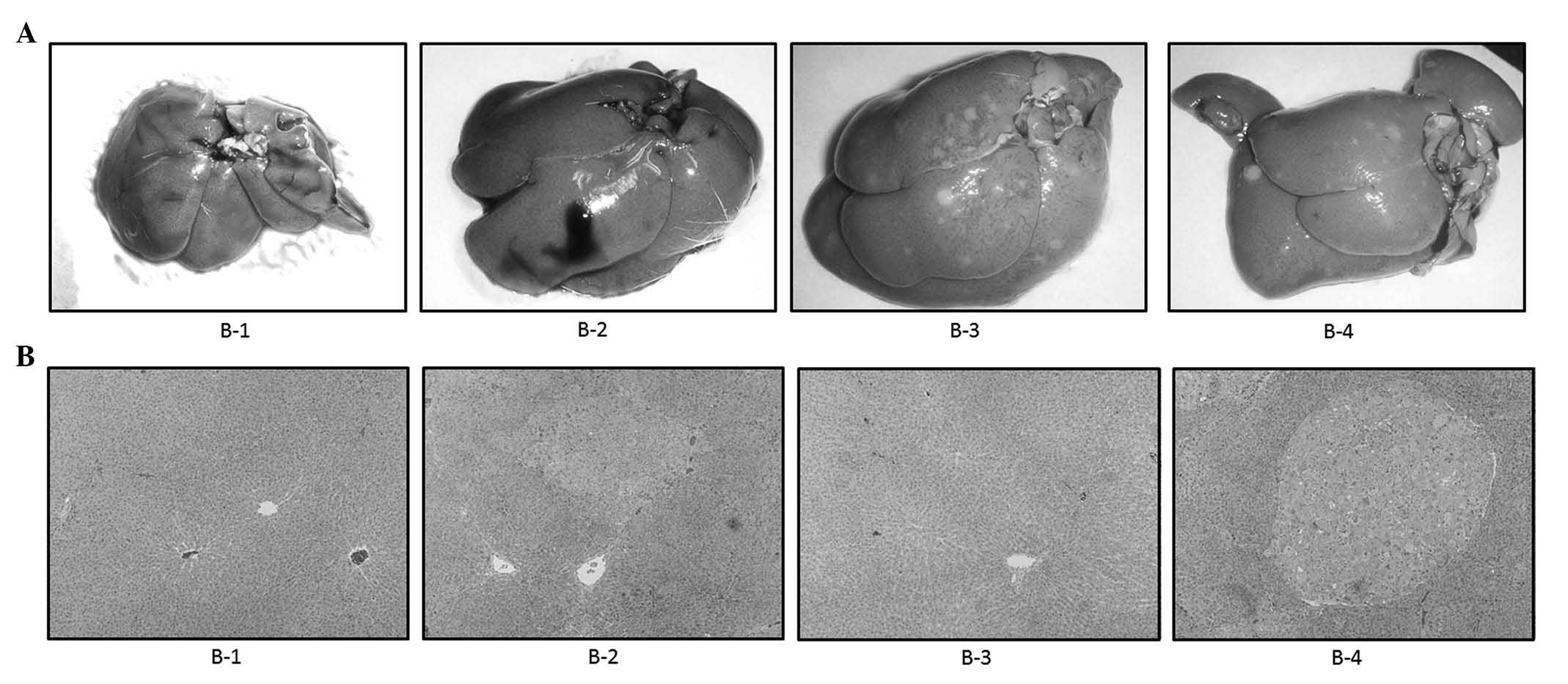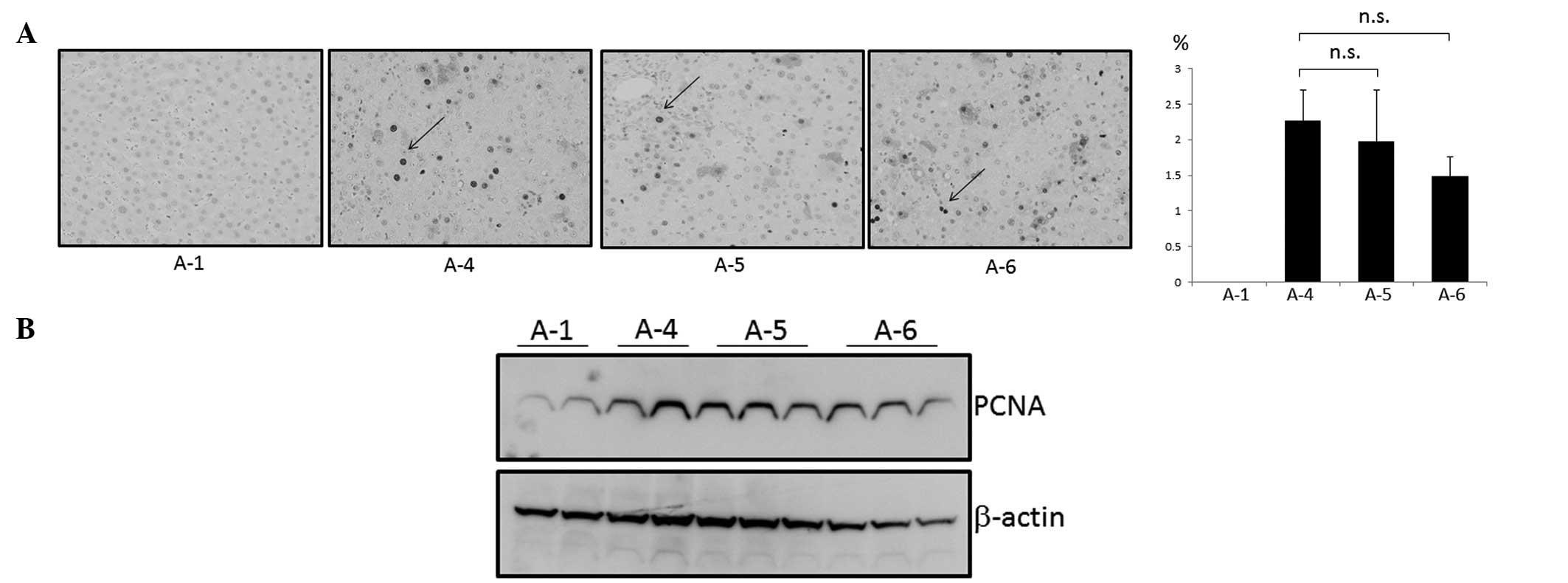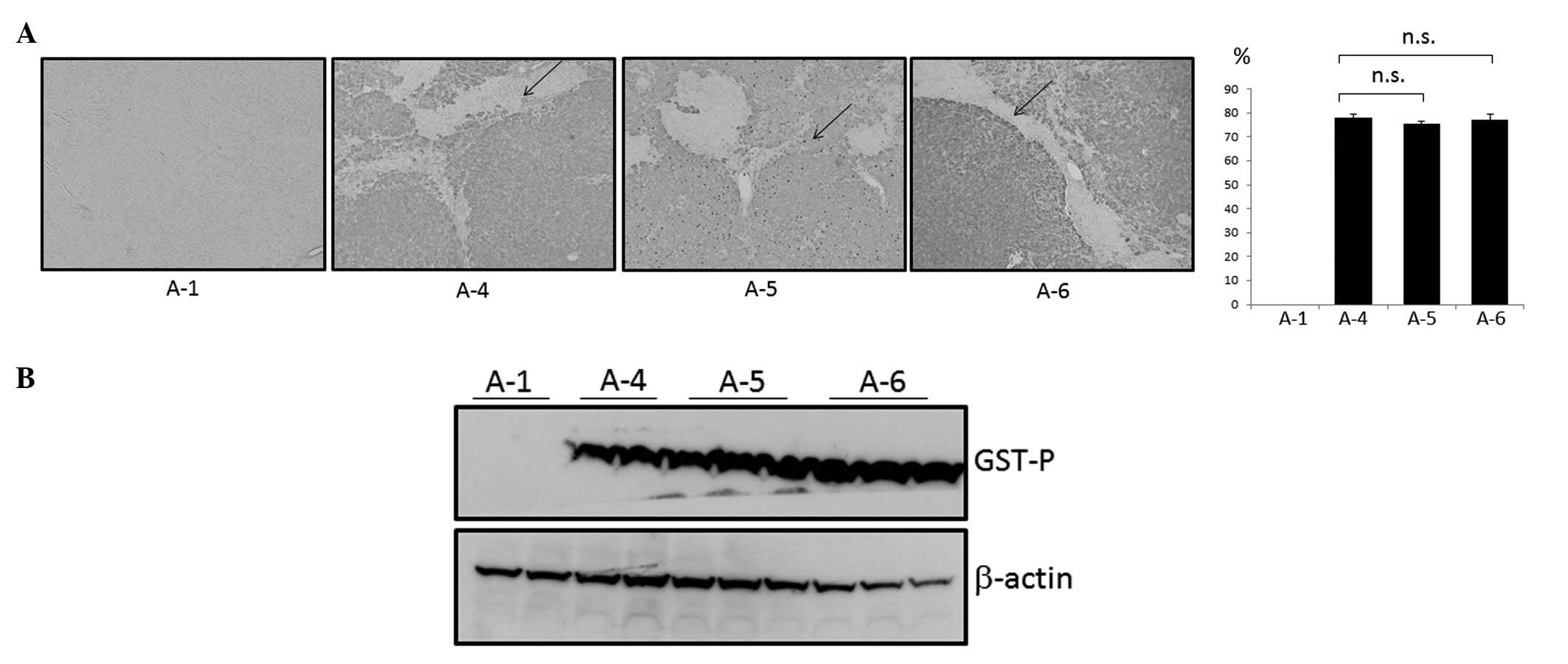|
1
|
Bosch FX, Ribes J and Borràs J:
Epidemiology of primary liver cancer. Semin Liver Dis. 19:271–285.
1999. View Article : Google Scholar
|
|
2
|
El-Serag HB and Rudolph KL: Hepatocellular
carcinoma: epidemiology and molecular carcinogenesis.
Gastroenterology. 132:2557–2576. 2007. View Article : Google Scholar : PubMed/NCBI
|
|
3
|
Farazi PA and DePinho RA: Hepatocellular
carcinoma pathogenesis: from genes to environment. Nat Rev Cancer.
6:674–687. 2006. View
Article : Google Scholar : PubMed/NCBI
|
|
4
|
Makuuchi M, Kokudo N, Arii S, et al:
Development of evidence-based clinical guidelines for the diagnosis
and treatment of hepatocellular carcinoma in Japan. Hepatol Res.
38:37–51. 2008. View Article : Google Scholar : PubMed/NCBI
|
|
5
|
Avila MA, Berasain C, Sangro B and Prieto
J: New therapies for hepatocellular carcinoma. Oncogene.
25:3866–3884. 2006. View Article : Google Scholar : PubMed/NCBI
|
|
6
|
Luper S: A review of plants used in the
treatment of liver disease: part 1. Altern Med Rev. 3:410–421.
1998.PubMed/NCBI
|
|
7
|
Freedman ND, Curto TM, Morishima C, Seeff
LB, Goodman ZD, Wright EC, Sinha R and Everhart JE; HALT-C Trial
Group. Silymarin use and liver disease progression in the Hepatitis
C Antiviral Long-Term Treatment against Cirrhosis trial. Aliment
Pharmacol Ther. 33:127–137. 2011. View Article : Google Scholar : PubMed/NCBI
|
|
8
|
Polyak SJ, Morishima C, Lohmann V, Pal S,
Lee DY, Liu Y, Graf TN and Oberlies NH: Identification of
hepatoprotective flavonolignans from silymarin. Proc Natl Acad Sci
USA. 107:5995–5999. 2010. View Article : Google Scholar : PubMed/NCBI
|
|
9
|
Bousserouel S, Bour G, Kauntz H, Gossé F,
Marescaux J and Raul F: Silibinin inhibits tumor growth in a murine
orthotopic hepatocarcinoma model and activates the TRAIL apoptotic
signaling pathway. Anticancer Res. 32:2455–2462. 2012.
|
|
10
|
Féher J and Lengyel G: Silymarin in the
prevention and treatment of liver diseases and primary liver
cancer. Curr Pharm Biotechnol. 13:210–217. 2012.PubMed/NCBI
|
|
11
|
Varghese L, Agarwal C, Tyagi A, Singh RP
and Agarwal R: Silibinin efficacy against human hepatocellular
carcinoma. Clin Cancer Res. 11:8441–8448. 2005. View Article : Google Scholar : PubMed/NCBI
|
|
12
|
Gopalakrishnan R, Sundaram J, Sattu K,
Pandi A and Thiruvengadam D: Dietary supplementation of silymarin
is associated with decreased cell proliferation, increased
apoptosis, and activation of detoxification system in
hepatocellular carcinoma. Mol Cell Biochem. 377:163–176. 2013.
View Article : Google Scholar : PubMed/NCBI
|
|
13
|
El-Shahat M, El-Abd S, Alkafafy M and
El-Khatib G: Potential chemoprevention of
diethylnitrosamine-induced hepatocarcinogenesis in rats: myrrh
(Commiphora molmol) vs. turmeric (Curcuma longa).
Acta Histochem. 114:421–428. 2012. View Article : Google Scholar : PubMed/NCBI
|
|
14
|
Al-Rejaie SS, Aleisa AM, Al-Yahya AA,
Bakheet SA, Alsheikh A, Fatani AG, Al-Shabanah OA and Sayed-Ahmed
MM: Progression of diethylnitrosamine-induced hepatic
carcinogenesis in carnitine-depleted rats. World J Gastroenterol.
15:1373–1380. 2009. View Article : Google Scholar : PubMed/NCBI
|
|
15
|
Verna L, Whysner J and Williams GM:
N-nitrosodiethylamine mechanistic data and risk assessment:
bioactivation, DNA-adduct formation, mutagenicity, and tumor
initiation. Pharmacol Ther. 71:57–81. 1996. View Article : Google Scholar : PubMed/NCBI
|
|
16
|
Solt DB, Cayama E, Tsuda H, Enomoto K, Lee
G and Farber E: Promotion of liver cancer development by brief
exposure to dietary 2-acetylaminofluorene plus partial hepatectomy
or carbon tetrachloride. Cancer Res. 43:188–191. 1983.PubMed/NCBI
|
|
17
|
Chuang SE, Kuo ML, Hsu CH, Chen CR, Lin
JK, Lai GM, Hsieh CY and Cheng AL: Curcumin-containing diet
inhibits diethylnitrosamine-induced murine hepatocarcinogenesis.
Carcinogenesis. 21:331–335. 2000. View Article : Google Scholar : PubMed/NCBI
|
|
18
|
Shiota G, Harada K, Ishida M, Tomie Y,
Okubo M, Katayama S, Ito H and Kawasaki H: Inhibition of
hepatocellular carcinoma by glycyrrhizin in
diethylnitrosamine-treated mice. Carcinogenesis. 20:59–63. 1999.
View Article : Google Scholar : PubMed/NCBI
|
|
19
|
Squire RA and Levitt MH: Report of a
workshop on classification of specific hepatocellular lesions in
rats. Cancer Res. 35:3214–3223. 1975.PubMed/NCBI
|
|
20
|
Alenzi FQ, El-Nashar EM, Al-Ghamdi SS,
Abbas MY, Hamad AM, El-Saeed OM, Wyse RK and Lotfy M: Investigation
of Bcl-2 and PCNA in hepatocellular carcinoma: relation to chronic
HCV. J Egypt Natl Canc Inst. 22:87–94. 2010.PubMed/NCBI
|
|
21
|
Sakai M and Muramatsu M: Regulation of
glutathione transferase P: a tumor marker of hepatocarcinogenesis.
Biochem Biophys Res Commun. 357:575–578. 2007. View Article : Google Scholar : PubMed/NCBI
|
|
22
|
Abe R, Okano J, Imamoto R, Fujise Y, Koda
M and Murawaki Y: Evaluation of the surveillance program for
hepatocellular carcinoma. Nihon Shokakibyo Gakkai Zasshi.
109:741–750. 2012.(In Japanese).
|
|
23
|
Hatanaka K, Kudo M, Fukunaga T, Ueshima K,
Chung H, Minami Y, Sakaguchi Y, Hagiwara S, Orino A and Osaki Y:
Clinical characteristics of Non-BNonC- HCC: Comparison with HBV and
HCV related HCC. Intervirology. 50:24–31. 2007. View Article : Google Scholar : PubMed/NCBI
|
|
24
|
Lee JK and Abou-Alfa GK: An update on
clinical trials in the treatment of advanced hepatocellular
carcinoma. J Clin Gastroenterol. 47(Suppl): S16–S19. 2013.
View Article : Google Scholar : PubMed/NCBI
|
|
25
|
Hong WK and Lippman SM: Cancer
chemoprevention. J Natl Cancer Inst Monogr. 17:49–53. 1995.
|
|
26
|
Zhang Y and Tang L: Discovery and
development of sulforaphane as a cancer chemopreventive
phytochemical. Acta Pharmacol Sin. 28:1343–1354. 2007. View Article : Google Scholar : PubMed/NCBI
|
|
27
|
Okano J, Fujise Y, Abe R, Imamoto R and
Murawaki Y: Chemoprevention against hepatocellular carcinoma. Clin
J Gastroenterol. 4:185–197. 2011. View Article : Google Scholar
|
|
28
|
Seeff LB, Curto TM, Szabo G, et al; HALT-C
Trial Group. Herbal product use by persons enrolled in the
hepatitis C Antiviral Long-Term Treatment Against Cirrhosis
(HALT-C) Trial. Hepatology. 47:605–612. 2008. View Article : Google Scholar : PubMed/NCBI
|
|
29
|
Deep G, Oberlies NH, Kroll DJ and Agarwal
R: Identifying the differential effects of silymarin constituents
on cell growth and cell cycle regulatory molecules in human
prostate cancer cells. Int J Cancer. 123:41–50. 2008. View Article : Google Scholar : PubMed/NCBI
|
|
30
|
Tyagi A, Raina K, Singh RP, Gu M, Agarwal
C, Harrison G, Glode LM and Agarwal R: Chemopreventive effects of
silymarin and silibinin on N-butyl-N-(4-hydroxybutyl) nitrosamine
induced urinary bladder carcinogenesis in male ICR mice. Mol Cancer
Ther. 6:3248–3255. 2007. View Article : Google Scholar : PubMed/NCBI
|
|
31
|
Rajamanickam S, Velmurugan B, Kaur M,
Singh RP and Agarwal R: Chemoprevention of intestinal tumorigenesis
in APCmin/+mice by silibinin. Cancer Res. 70:2368–2378.
2010. View Article : Google Scholar : PubMed/NCBI
|
|
32
|
Ramakrishnan G, Raghavendran HR,
Vinodhkumar R and Devaki T: Suppression of N-nitrosodiethylamine
induced hepatocarcinogenesis by silymarin in rats. Chem Biol
Interact. 161:104–114. 2006. View Article : Google Scholar : PubMed/NCBI
|
|
33
|
Ramakrishnan G, Augustine TA, Jagan S,
Vinodhkumar R and Devaki T: Effect of silymarin on
N-nitrosodiethylamine induced hepatocarcinogenesis in rats. Exp
Oncol. 29:39–44. 2007.PubMed/NCBI
|
|
34
|
Brandon-Warner E, Eheim AL, Foureau DM,
Walling TL, Schrum LW and McKillop IH: Silibinin (Milk Thistle)
potentiates ethanol-dependent hepatocellular carcinoma progression
in male mice. Cancer Lett. 326:88–95. 2012. View Article : Google Scholar : PubMed/NCBI
|



